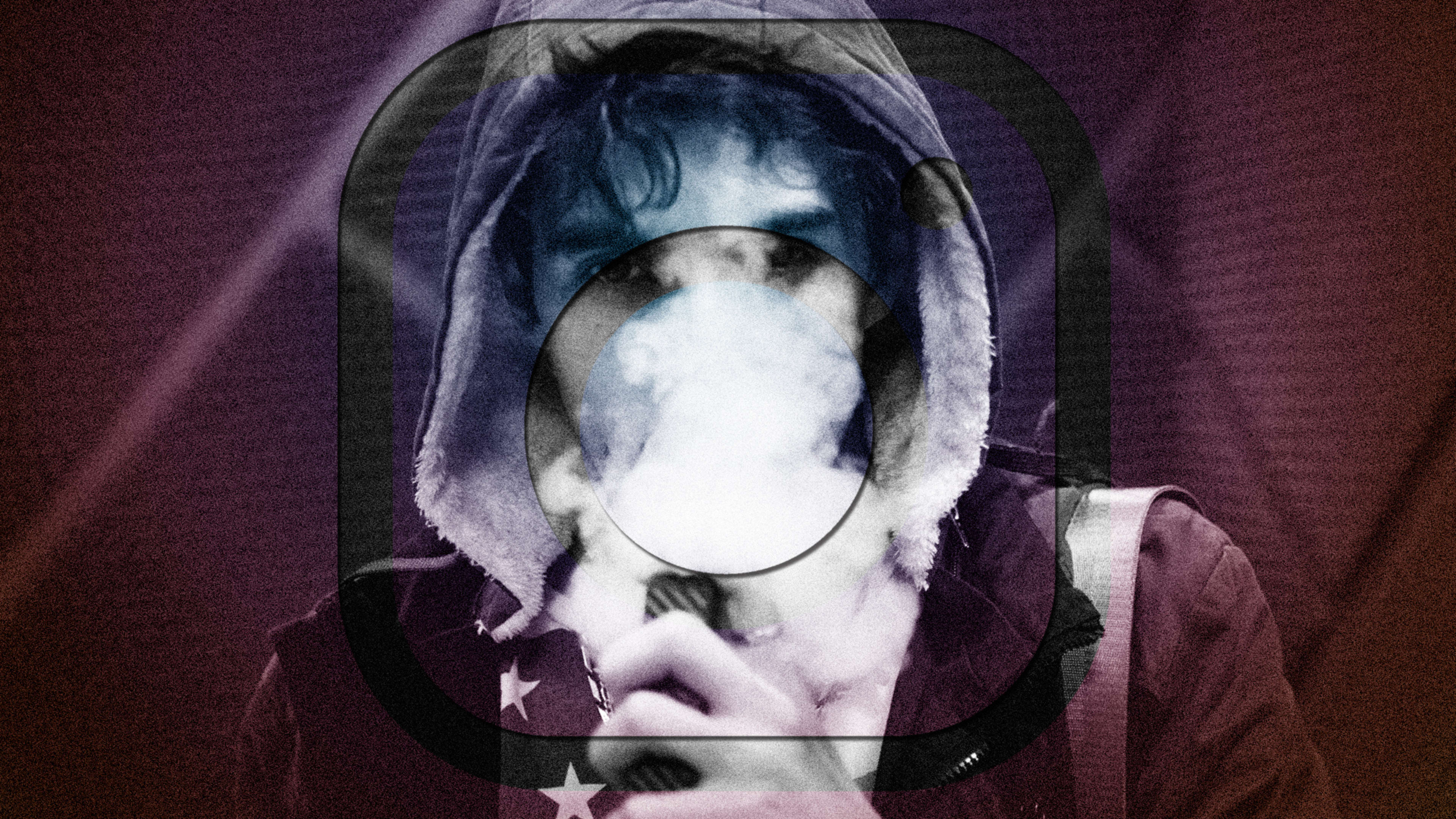“If Instagram doesn’t allow people to promote vape, there will be a lot of people losing their jobs, including me,” an influencer who goes by Valerie Wee tells me over email. Her account is filled with vape tricks, vaporizer giveaways, and glowing product reviews.
Last week, Instagram said it would be cracking down on sponsored vaping content. “Branded content that promotes goods such as vaping, tobacco products, and weapons will not be allowed,” the company said. “Our advertising policies have long prohibited the advertisement of these products, and we will begin enforcement on this in the coming weeks.”
While Instagram claims it has never allowed promotion of content featuring weapons, tobacco, or vapes, in the past it has primarily policed ads that companies directly promote on its platform. It has been less focused on pulling down ads that only exist on an influencer’s grid or in their stories and live streams. A company spokesman said Instagram’s new effort is part of making the social platform safer overall. She did not say explicitly how Instagram plans to enforce its beefed-up policy.
https://www.instagram.com/p/B4d8enjAjQY/
Vaping influencers such as Wee, who blows elaborate smoke rings and tests products for her 58,000 followers, feel that vaping and e-cigarettes are being maligned, because of the vaping illness that has sent 2,506 people to the hospital and killed 54. They argue that though the vaping illness is scary, it has not yet been linked to reputable brands. To date, 152 THC-containing vaping brands have been associated with the vaping illness, including Dank Vapes, TKO, Smart Cart, and Rove, according to the CDC (THC is the psychoactive ingredient in marijuana).
The concern among vaping influencers, many of whom believe vaping is a safer alternative to smoking, is that without the ability to work with brands, they won’t be able to continue making the case against cigarettes.
“It’s not just influencers that it’s affecting—it’s the entire vape community and anyone that wants to try it to quit smoking with this method,” says Allie Embers, a vaping influencer with nearly 16,000 followers. She added that vaping has enabled her and her father to quit. She acknowledges that inhaling anything into your lungs is not good for you, but asserts that vaping is less harmful than cigarettes and helped her to ween herself off them.
Allie EmbersIt’s not just influencers that it’s affecting—it’s the entire vape community.”
“Consumers should only EVER purchase from trusted brands from well known and reputable sources or retailers,” Embers says. “There is definitely a misconception about vaping being a direct cause of these issues and what it comes down to is off-market brands that use unapproved untested chemicals and ingredients.”
Scientists are divided on how much harm e-cigarettes cause. Inhaling smoke or vapor into one’s lungs is inherently risky. Some researchers warn that harmful metals such as lead, chromium, and nickel can be found in the vapors. Scientists have also connected vaping to cancer in mice. However, others say that vaping remains an effective tool for helping people quit cigarettes.
While the CDC continues to investigate the vaping illness, the Food and Drug Administration has made only a few public pronouncements. So far, it has advised the general public to avoid vapes with THC in them, reminding users that no vaping product is currently approved by the FDA. Meanwhile, several states and some cities have banned various products, such as flavored e-cigarettes, while a select few have imposed outright bans on all vaping products.
Kids like vaping tricks too, even if they’re not the intended audience of vape influencers. “The real reason [my son] vaped was to bond with his friends while they were posting vape tricks, like making rings of smoke, on social media,” explains Diane Moca, a mother of two teens who vape. She says her daughter also explained that one of the big draws to vaping was doing vape tricks and posting about them on social media. The e-cigarette company Juul spent $200,000 on influencer marketing, which appeared to be targeted toward young people. Aside from the vaping illness, the rise in vaping and nicotine addiction among youth has caused the greatest concern around vaping. In December, the CDC reported that 27.5% of high school students and 10.5% of middle school students used e-cigarettes in the last 30 days.
For vape brands, the decision to more strongly go after vape advertising on Instagram is just one more knock against the industry.
Recognize your brand’s excellence by applying to this year’s Brands That Matter Awards before the early-rate deadline, May 3.
